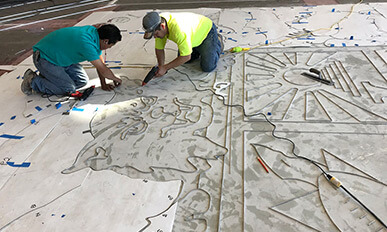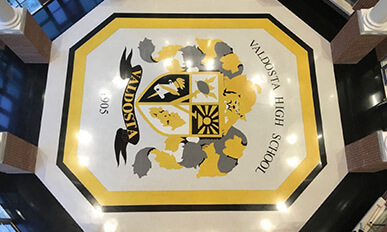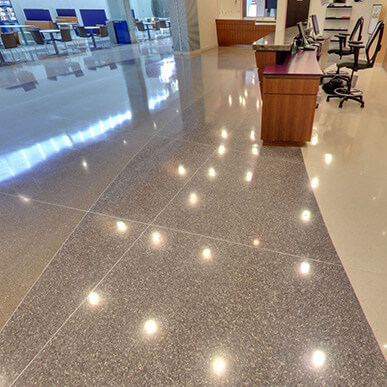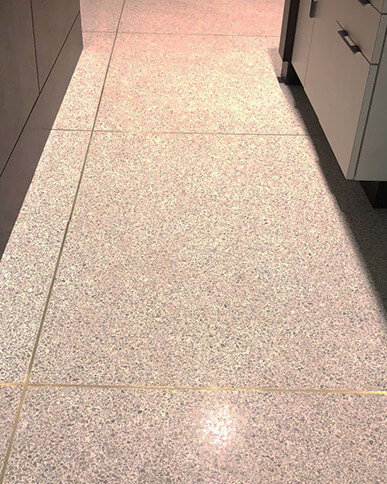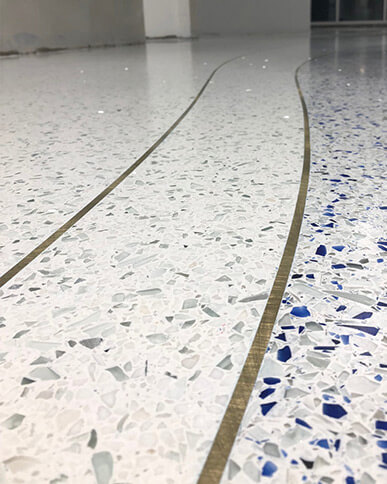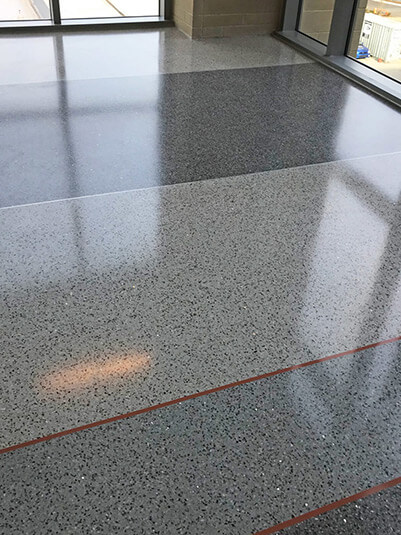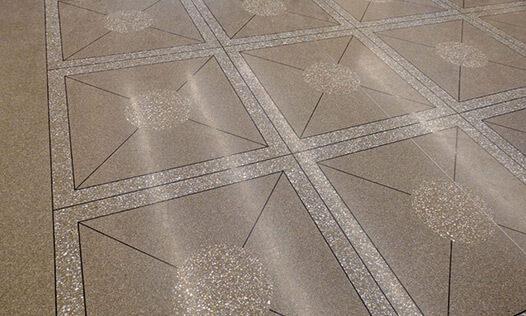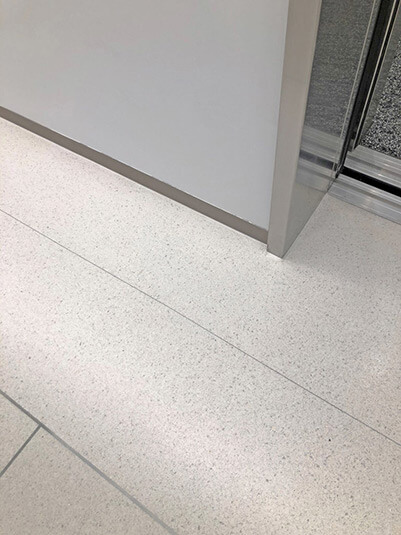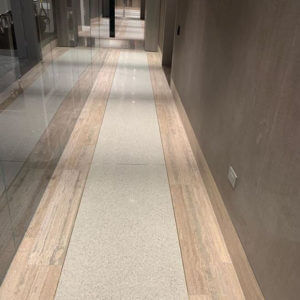12 Oct Purpose of Divider Strips in Terrazzo Flooring
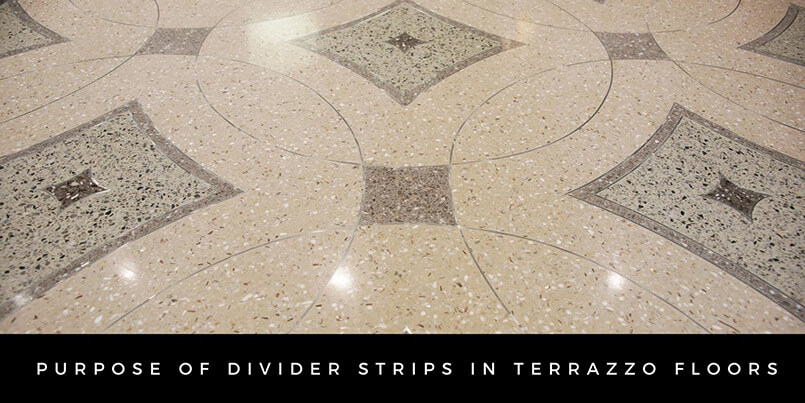
Purpose of Divider Strips in Terrazzo Flooring
Terrazzo is mostly characterized by its aggregates and its binder (epoxy or cement). Terrazzo divider strips are also an important component of a terrazzo floor. In this blog, we will dive into the purpose of divider strips and take a look at some of the options available in helping you design your next terrazzo project.
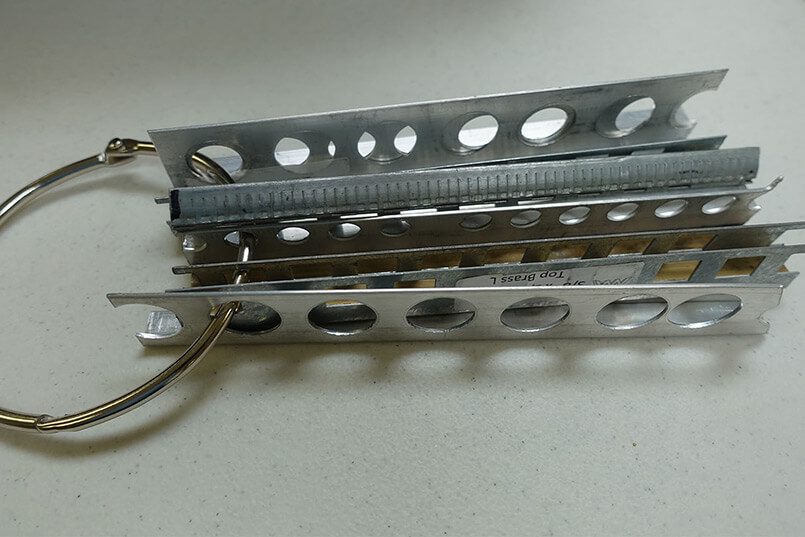
Divider strips used in terrazzo flooring serves two purposes: Form and Function
Form
Divider strips form the layout of the terrazzo floor design. During the installation, terrazzo contractors will cut and place strips prior to pouring in place the epoxy terrazzo material.
Divider strips give architects and designers the ability to plan complex patterns, logos, and other custom designs.
Divider strips dictate a color change in the terrazzo design. Often terrazzo projects use anywhere from two colors to over twenty colors when completing a floor design. Typically terrazzo installers will mix each terrazzo color one at a time and trowel the material in between the strips according to the designer’s drawings.
Installers can easily bend the divider strips on-site to form any letterings, curved or wavy patterns, and logos.
Divider Strip Options
Materials
Divider strips can be selected based on the type of material. When designing a terrazzo floor, you can choose from a variety of materials: aluminum, brass, zinc, and plastic strips. We will showcase some examples and discuss what to look out for when selecting each material.
Aluminum
Most epoxy terrazzo floor will use aluminum divider strips. We recommend using aluminum strips for a couple of reasons: it’s affordable, is a good source of recycled content if LEED points are relevant to your project, and is easy to use on a project to create patterns.
Zinc
Zinc is another material to consider. Zinc strips were often used in cement terrazzo installations but are less likely to be used in epoxy terrazzo installations today. Why? Zinc looks similar to aluminum; however, we recommend architects and designers select aluminum when specifying epoxy terrazzo to minimize cost and for ease of installation. Zinc will cost more than aluminum, and it is harder to grind over the strip during installation.
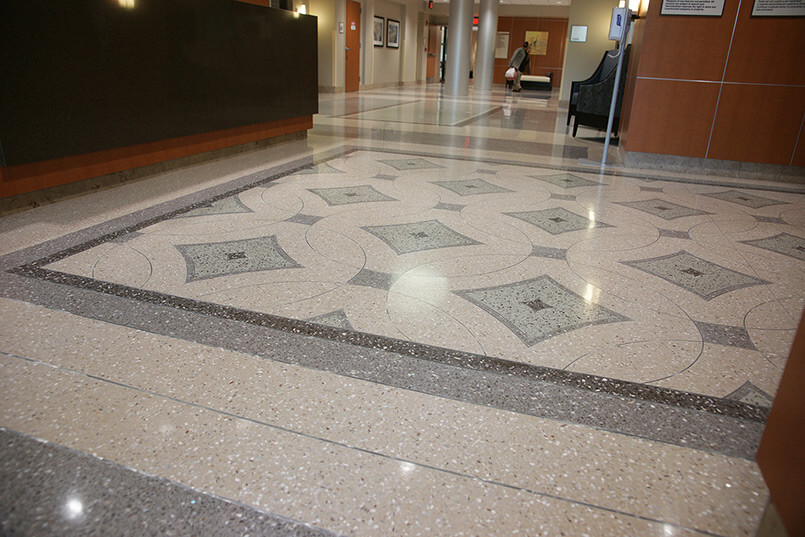
Brass
Another option is brass. Brass strips are used as a strong design element in the aesthetic of cement and epoxy terrazzo floors. The drawback is that is high-end material; therefore, costs more than aluminum and zinc. Be warned that the copper in brass strips can result in blue staining on or adjacent to the divider strips, noticeable in lightly colored matrixes. It is recommended to ask a terrazzo manufacturer whether their epoxy resin is compatible with brass strips.
Plastic
Plastic strips are another option to consider. Common colors are white and black; however, custom colors are available as well. This may be good for accent colors to match a university’s color theme.
Sometimes architects ask us if they can design a terrazzo floor where the strips are hardly noticeable. With plastic strips, it is possible to match the epoxy colors and have them blend with the floor design.
Thickness
Divider strips vary in size as well. A common term to know is a strip’s gauge. When selecting strips, ask yourself whether you want to strip to have a thin or thick appearance. A couple of options you can select range from 1/16″, 1/8″ and 1/4″ thicknesses.
Divider strips are customizable to complement your terrazzo floor. You have options to determine the thickness of the strip, the color or material of the strip, and whether you want the strip to be visible or hidden. Now that we’ve discussed how divider strips form the design of a terrazzo floor, we will now look into its function.
Function
In addition to creating the layout of a terrazzo floor, divider strips play an important role in controlling the cracking of the terrazzo topping.
Installers will place the specified divider strips, including all saw cuts and expansions areas, and secure them in place. We recommend engineers identify areas of a building where the floor may crack so that the installers can properly install each strip. Attention to these details can prevent future problems later in the flooring lifecycle and help building owners save on cost for any repairs.
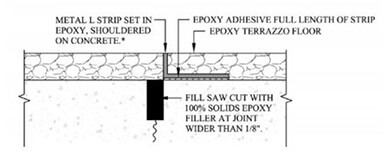
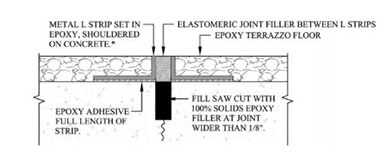
VIEW MARKETS
See more examples of terrazzo floors by viewing the different markets that epoxy terrazzo is commonly installed.
ARCHITECTURAL BINDER
Download our Architectural Binder to learn more about terrazzo flooring and TERRAZZCO products.
CONTACT US
Have questions about selecting divider strips for your terrazzo floor project? Contact our representatives.







